The Ten Species Of Small Wild Cats Found In Asia
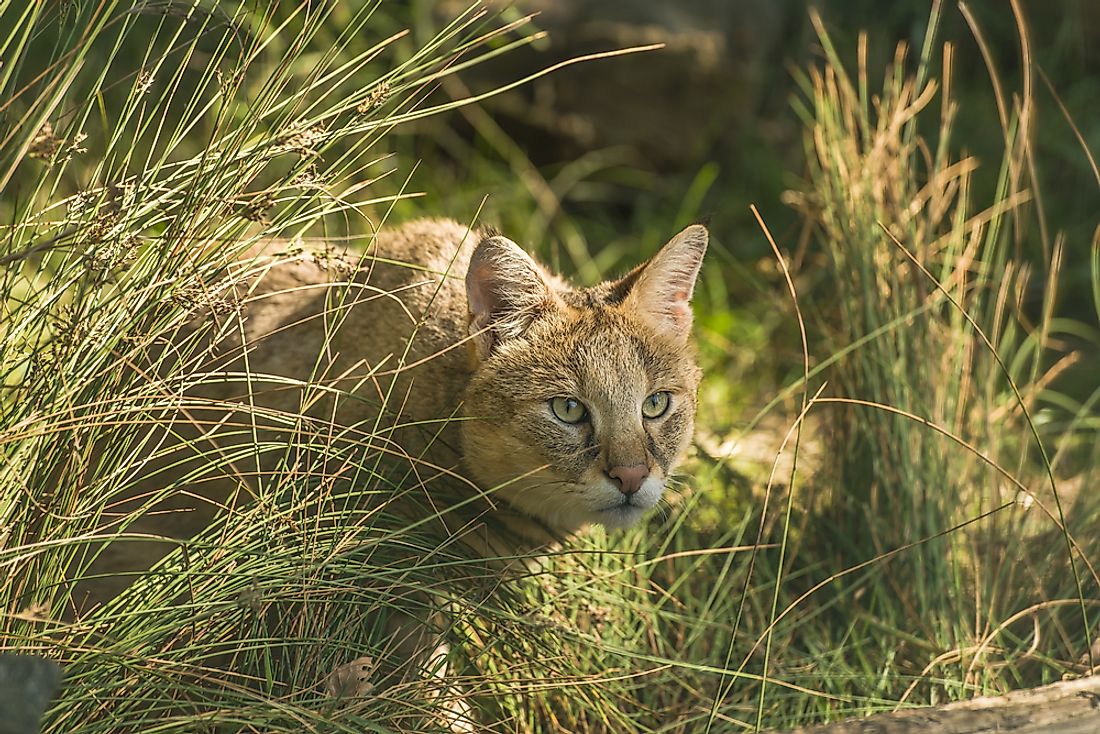
Asia has a rich biodiversity of flora and fauna inhabiting the vast and varied landscapes of the continent. Although the big cats of Asia like the lion, tiger, leopard, cheetah, and snow leopard are well-known, the continent also hosts ten smaller cat species with unique appearances and behavior. Many of these wild cats are threatened and deserve the attention of conservationists. There is a need to focus on the protection of these smaller wild cats before they disappear completely. Here is a list of the ten small wild cat species found in Asia.
10. Bornean Bay Cat
The Catopuma badia is a wild cat species that is found only on the island of Borneo. These cats live in a wide variety of habitats ranging from forests to wetlands. The bay cats have a uniform, bright chestnut colored coat that is paler at the undersides. The length of these cats ranges from 49.5 to 67 cm from head to the base of the tail. The tail is around 30.0 to 40.3 cm long. The Bornean bay cat is nocturnal and solitary in nature. Thus is it difficult to study the behavior of these cats. The cat is an Endangered species on the IUCN Red List. Wanton destruction of the habitat of this cat due to palm oil plantations and logging, and the illegal wildlife trade are the biggest factors responsible for bringing down the population of this species.
9. Chinese Mountain Cat
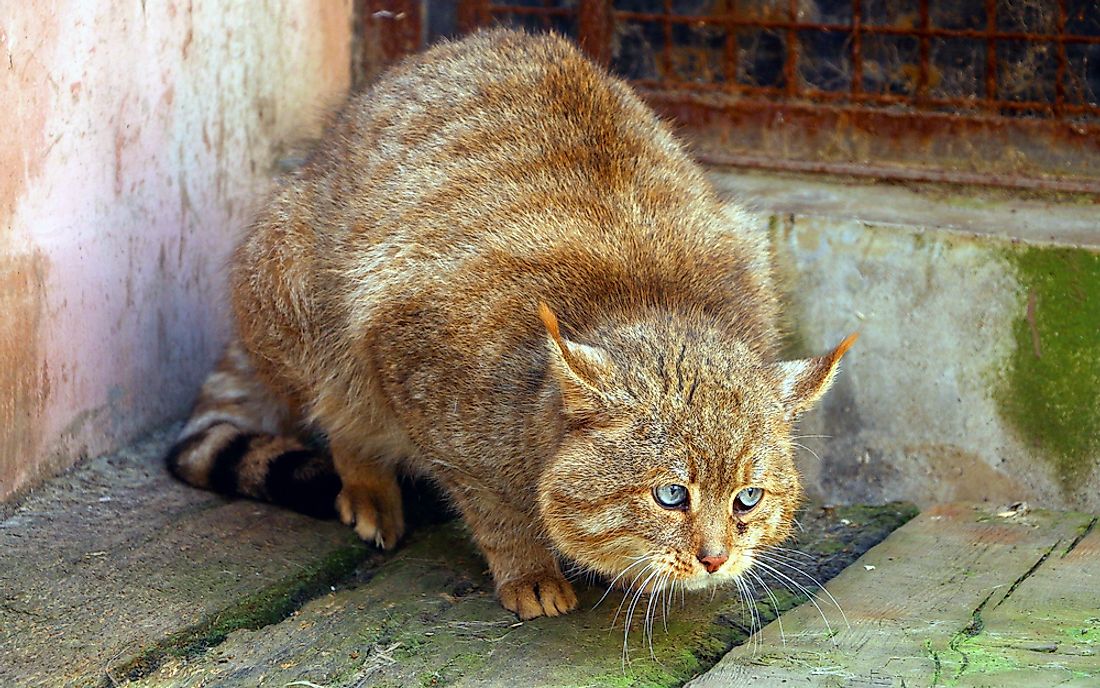
The Felis bieti is endemic to China. Here it is found on the Tibetan Plateau’s north-eastern edge. The cat lives at elevations ranging from 8,200 to 16,400 ft. Its habitats include coniferous forests, alpine shrublands and meadows, and grasslands at high altitudes. The head-body length of these cats ranges from 69 to 84 cm while the tails with black rings are around 29 to 41 cm long. The fur is sand-colored and has dark guard hairs. Rodents, birds, and pikas constitute the prey base of the Chinese mountain cat. The IUCN classifies this species as Vulnerable. One of the biggest threats to this species is the poisoning of pikas by people that in turn leads to the death of these cats that feed on the pikas.
8. Asiatic Golden Cat
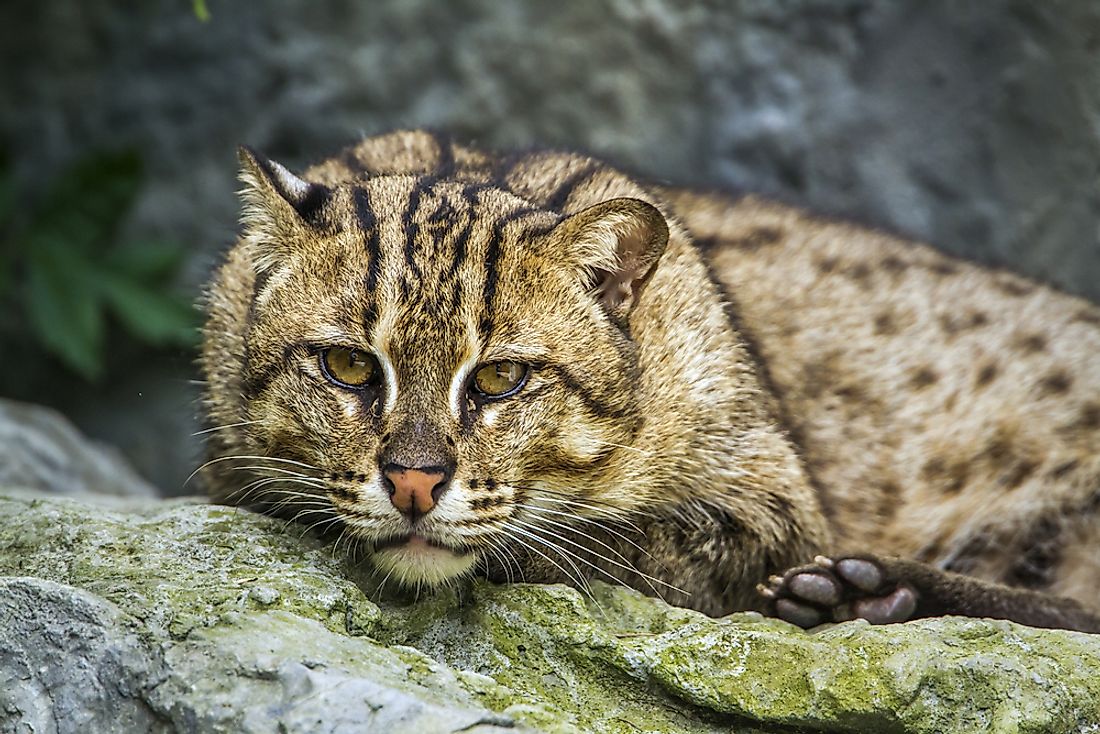
The Catopuma temminckii is found in Southeast Asia and the Indian subcontinent. Its habitat ranges from forests to grasslands. It has been recorded at elevations of up to about 12,000 ft. The head to body length of the species ranges from 66 to 105 cm and the tail is around 40 to 57 cm long. The color of the coat ranges from red to black and is uniform in color. Stripes and spots might be present. The face has black and white lines. These cats are solitary and nocturnal in nature. They can climb trees and prey on birds, rodents, reptiles, hares, etc. The Asian golden cat has been labeled as a Near Threatened species by the IUCN. Illegal wildlife trade, persecution by humans, and deforestation threaten the populations of this wild cat of Asia.
7. Asiatic Wildcat
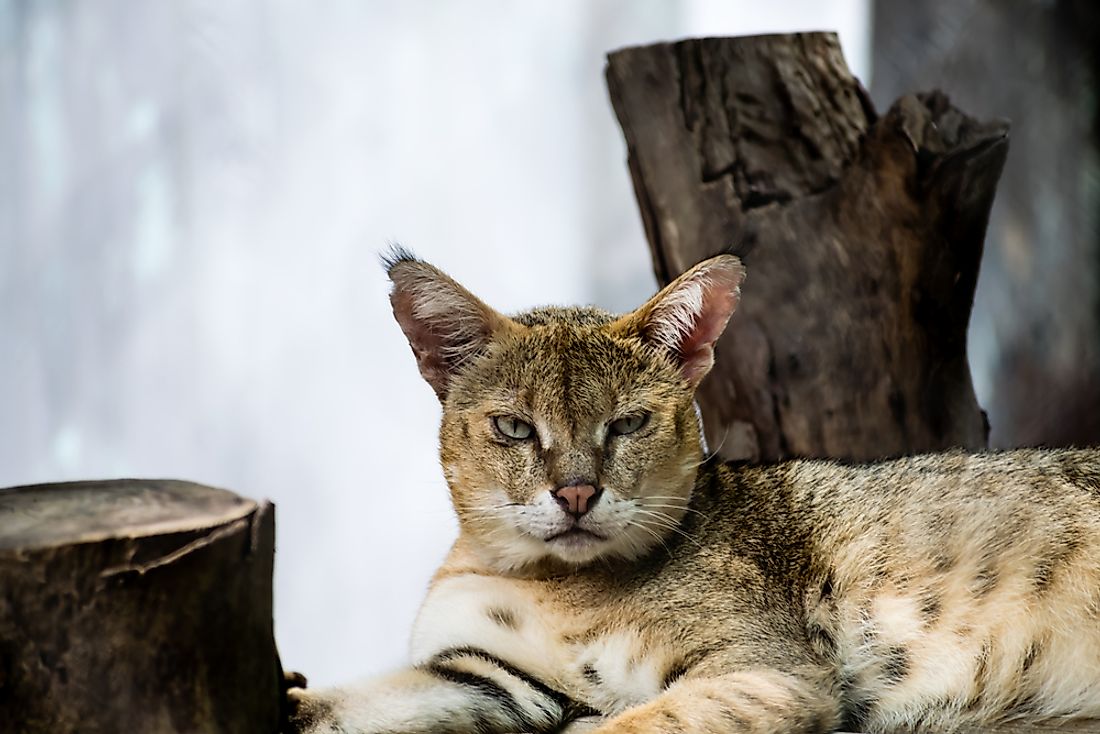
The Felis lybica ornata is a subspecies of the wildcat that is found in Asia. The Caucasus mountain range forms the physical barrier between the European and Asian populations of the wildcat species. In Asia, the wildcat inhabits semi-desert and desert habitats around the Caspian Sea region. These cats are also spotted at elevations of up to 9,800 ft. The coat color of this subspecies varies with the habitat where it is found. The populations living in the desert areas have paler coats with little spots or streaks. The ones living in wooded habitats are darker in color and are heavily streaked or spotted or both. The prey base of these cats includes small mammals, birds, reptiles, and amphibians. They are known to kill highly poisonous snakes like cobras and vipers. The Asiatic wildcat is labeled as a Least Concern species but populations have declined over the years.
6. Rusty-spotted Cat
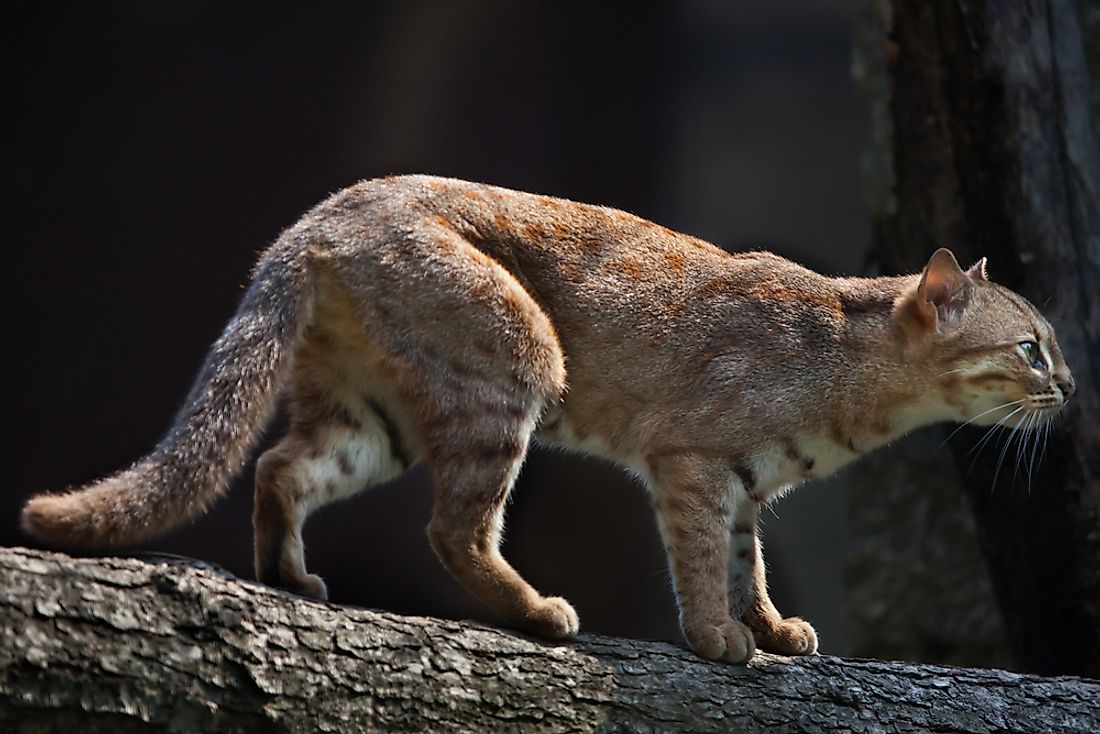
The Prionailurus rubiginosus is a wild cat of Asia that has a relatively restricted range and is found in some parts of the Indian sub-continent. The cat inhabits deciduous forests, grasslands, and scrubland habitats. The length of the cat ranges from 35 to 48 cm and its tail length is about 15 to 30 cm. The gray fur has rusty spots at the sides and back. The underparts have white colored fur with dark spots. Due to the elusive nature of this species, little is known about its behavior. The cats are believed to be nocturnal in nature. Rodents, birds, insects, frogs, and lizards constitute the prey base of the rusty-spotted cat. The cat is a Near Threatened species due to a restricted range and habitat loss.
5. Pallas’s Cat
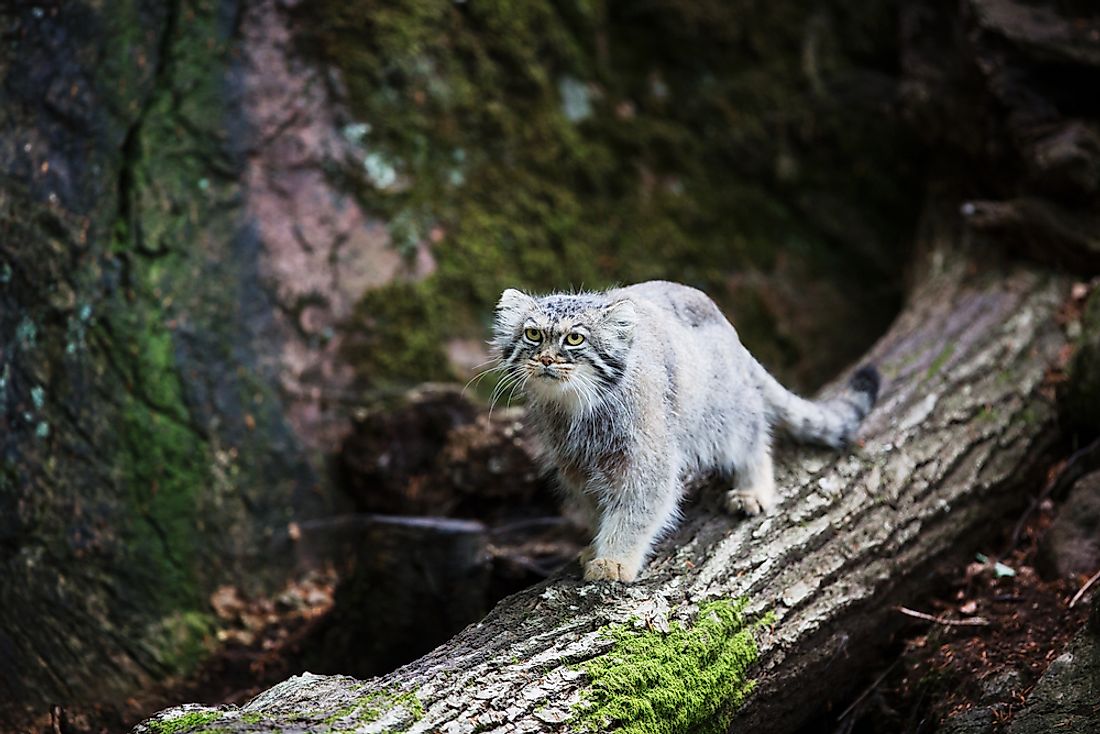
The Otocolobus manul is found in the Central Asian montane steppe and grassland habitats. The body size of this cat ranges between 46 to 65 cm and its tail is between 21 and 31 cm long. The cat has long and dense ochre colored fur and has a stout and plush appearance. These Pallas’s cat is solitary and territorial in nature. It rests in caves, burrows of other animals, and crevices in rocks during the day and hunts during the late afternoon. The cat is not a fast runner and hence hunts by stalking and ambushing its prey. Birds and rodents are its main prey. The Pallas’s cat is classified as Near Threatened by the IUCN as poaching, a decline in the prey base, and habitat loss adversely affects the stability of the populations of this species.
4. Jungle Cat

The Felis chaus or the swamp cat is widely distributed in Asia. The cat prefers to live in areas with dense vegetation and adequate sources of water. As such, it is found in wetland habitats and riparian areas. It is also found in human-modified habitats like large plantations and cultivated fields. The cat is also found at elevations ranging from sea-level to around 7,500 ft. The head to body length of the jungle cat ranges from 59 to 76 cm. The long and narrow face has a white muzzle. The color of the coat varies from gray to sandy to reddish brown and lacks spots or stripes. These cats hunt during the day and are solitary and territorial in nature. The jungle cats feed on small mammals, fish, birds, insects, and reptiles. Due to a wide distribution and relatively stable population, the species is listed as Least Concern by the IUCN. However, habitat loss and illegal hunting threaten the future survival of the species.
3. Fishing Cat
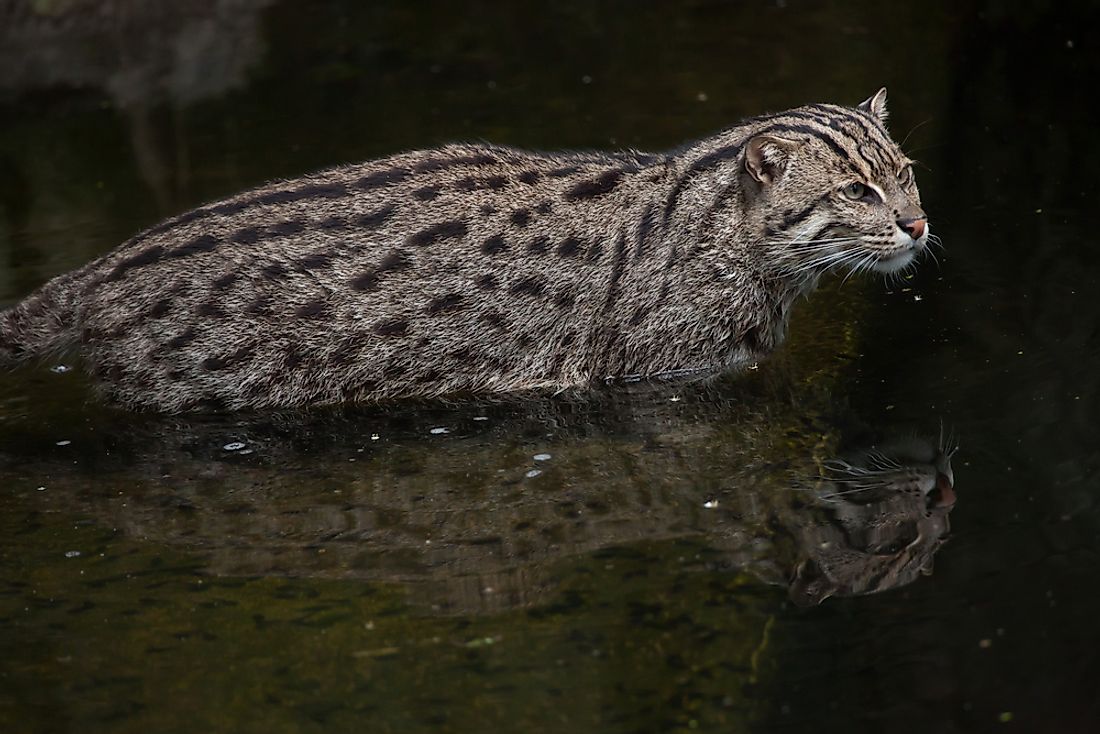
The Prionailurus viverrinus is a wild cat living in Southeast and South Asia. These cats prefer to inhabit wetland habitats like mangroves, marshes, swamps, reed beds, etc. However, they are also found in tropical dry and evergreen forests. These cats range in size from 57 to 78 cm from head to the base of the tail. The length of the tail ranges between 20 and 30 cm. The color of the coat is grayish with spots and stripes distributed unevenly. The fishing cats are hard to spot due to their nocturnal and secretive nature. These cats are expert swimmers and can even swim under water. Fish constitutes the major part of their diet. However, they also feed on reptiles, rodents, snakes, amphibians, etc. The destruction of wetlands is the biggest threat to this species. The fishing cat is listed as Vulnerable on the IUCN Red List.
2. Marbled Cat
The Pardofelis marmorata is found in Southeast and South Asia. It inhabits deciduous and evergreen tropical forests as well as swampy areas and peat lands. The cat is nearly the size of a domestic cat. The size of the cat ranges from 45 to 62 cm from head to body while the tail has a length of 35 to 55 cm. The coat color varies from brownish-gray to buff with black stripes, solid spots, and 'marbled' patterned dark-edged blotches. Due to the secretive nature of the marbled cat, little is known about the behavior of the species. It is an excellent climber and often hunts in the forest canopies. Birds, reptiles, rodents like squirrels, etc., are the prey of these cats. The species is labeled as Near Threatened by the IUCN. Snaring and killing for body parts and habitat loss threaten the future existence of the marbled cat.
1. Leopard Cat
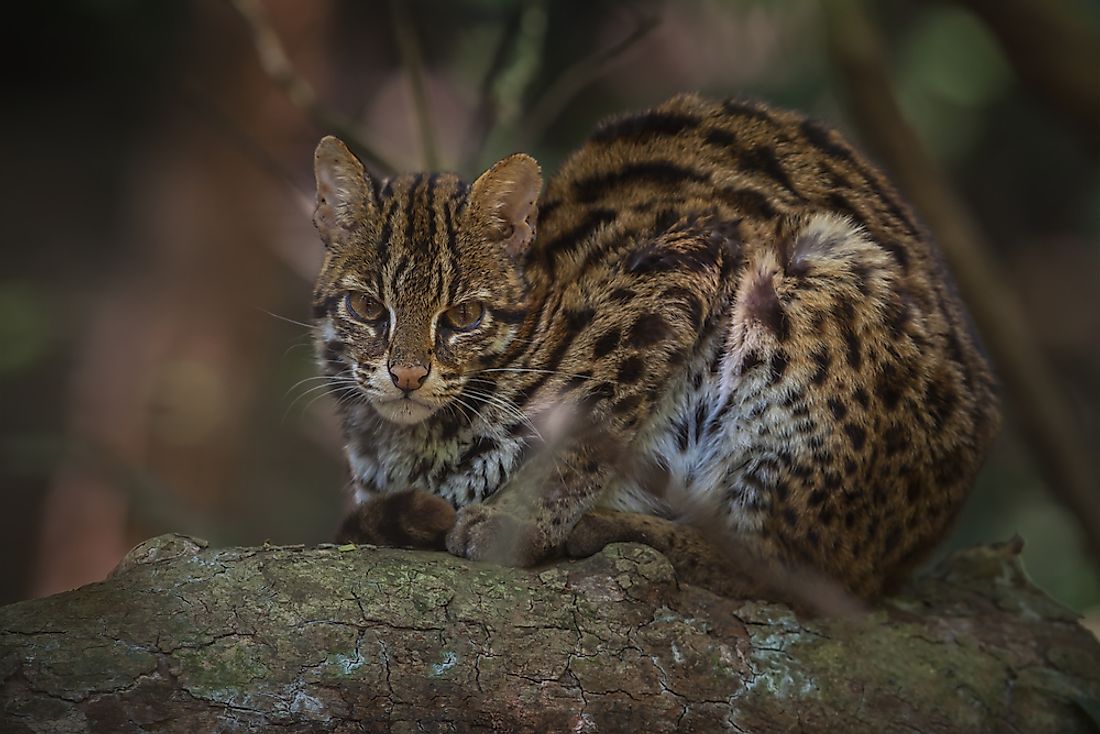
The Prionailurus bengalensis is a wild cat species found in East, Southeast, and South Asia. The cat is found in tropical, sub-tropical and deciduous forests and is found at elevations up to about 3,300 ft. The leopard cats can also inhabit modified habitats like plantations areas. The cat is nearly the size of a domestic cat. The length of the cat is around 38.8 to 66 cm. The size of the long tails ranges from 17.2 to 31 cm. The fur is generally tawny with black spots and the underparts are white. However, the color and patterns on the pelage vary in different parts of the cat’s range. The widely distributed leopard cat is a Least Concern species on the IUCN Red List. However, hunting and habitat loss threaten several populations of this species.







